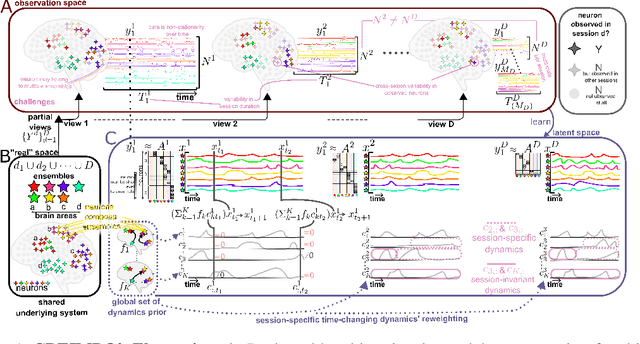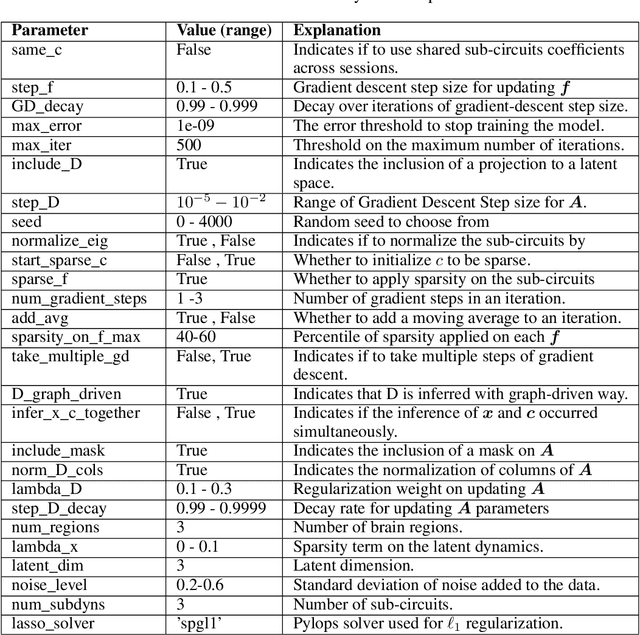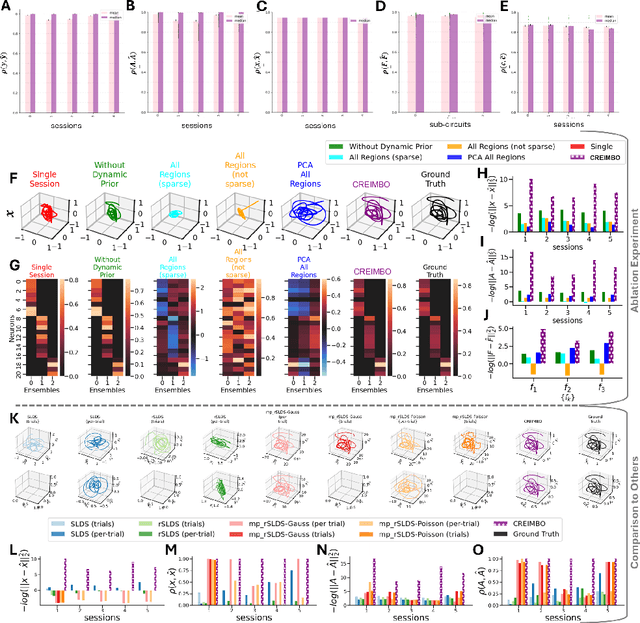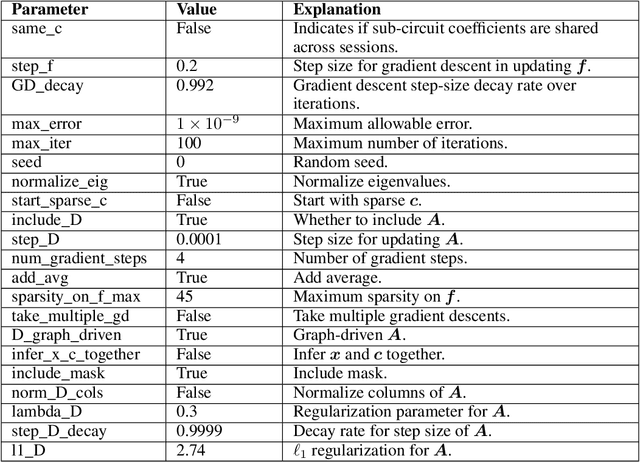Ryan Ly
CrEIMBO: Cross Ensemble Interactions in Multi-view Brain Observations
May 27, 2024



Abstract:Modern recordings of neural activity provide diverse observations of neurons across brain areas, behavioral conditions, and subjects -- thus presenting an exciting opportunity to reveal the fundamentals of brain-wide dynamics underlying cognitive function. Current methods, however, often fail to fully harness the richness of such data as they either provide an uninterpretable representation (e.g., via "black box" deep networks) or over-simplify the model (e.g., assume stationary dynamics or analyze each session independently). Here, instead of regarding asynchronous recordings that lack alignment in neural identity or brain areas as a limitation, we exploit these diverse views of the same brain system to learn a unified model of brain dynamics. We assume that brain observations stem from the joint activity of a set of functional neural ensembles (groups of co-active neurons) that are similar in functionality across recordings, and propose to discover the ensemble and their non-stationary dynamical interactions in a new model we term CrEIMBO (Cross-Ensemble Interactions in Multi-view Brain Observations). CrEIMBO identifies the composition of the per-session neural ensembles through graph-driven dictionary learning and models the ensemble dynamics as a latent sparse time-varying decomposition of global sub-circuits, thereby capturing non-stationary dynamics. CrEIMBO identifies multiple co-active sub-circuits while maintaining representation interpretability due to sharing sub-circuits across sessions. CrEIMBO distinguishes session-specific from global (session-invariant) computations by exploring when distinct sub-circuits are active. We demonstrate CrEIMBO's ability to recover ground truth components in synthetic data and uncover meaningful brain dynamics, capturing cross-subject and inter- and intra-area variability, in high-density electrode recordings of humans performing a memory task.
The Artificial Intelligence Ontology: LLM-assisted construction of AI concept hierarchies
Apr 03, 2024


Abstract:The Artificial Intelligence Ontology (AIO) is a systematization of artificial intelligence (AI) concepts, methodologies, and their interrelations. Developed via manual curation, with the additional assistance of large language models (LLMs), AIO aims to address the rapidly evolving landscape of AI by providing a comprehensive framework that encompasses both technical and ethical aspects of AI technologies. The primary audience for AIO includes AI researchers, developers, and educators seeking standardized terminology and concepts within the AI domain. The ontology is structured around six top-level branches: Networks, Layers, Functions, LLMs, Preprocessing, and Bias, each designed to support the modular composition of AI methods and facilitate a deeper understanding of deep learning architectures and ethical considerations in AI. AIO's development utilized the Ontology Development Kit (ODK) for its creation and maintenance, with its content being dynamically updated through AI-driven curation support. This approach not only ensures the ontology's relevance amidst the fast-paced advancements in AI but also significantly enhances its utility for researchers, developers, and educators by simplifying the integration of new AI concepts and methodologies. The ontology's utility is demonstrated through the annotation of AI methods data in a catalog of AI research publications and the integration into the BioPortal ontology resource, highlighting its potential for cross-disciplinary research. The AIO ontology is open source and is available on GitHub (https://github.com/berkeleybop/artificial-intelligence-ontology) and BioPortal (https://bioportal.bioontology.org/ontologies/AIO).
 Add to Chrome
Add to Chrome Add to Firefox
Add to Firefox Add to Edge
Add to Edge